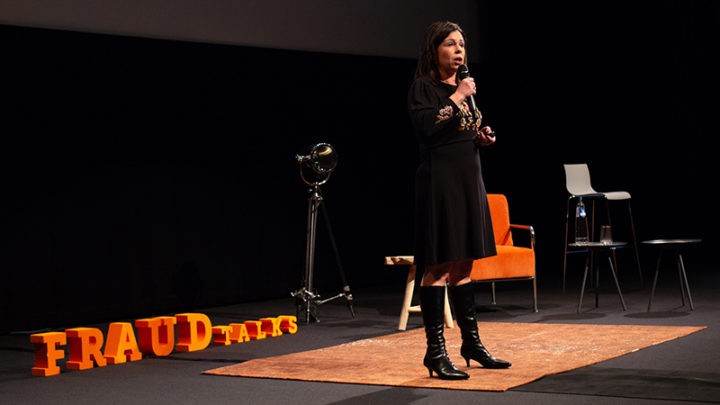Staged Accidents and Insurance Companies
Aug 21, 2019
Jim Murphy, M.S., CFE
Recently I attended the mid-year meeting of the Coalition Against Insurance Fraud in Orlando, Florida. One of the topics of discussion was establishing a partnership between AARP and the Coalition Against Insurance Fraud. What I didn’t realize and learned during the meeting is that there are over 37 million members of AARP. That’s a lot of people!
And of course, what that means is the organized fraudster has a huge opportunity to target those that may not be able to defend themselves. It’s unfortunate that in their “golden years” senior citizens need to keep a look out for predators who want nothing more to find an elderly victim. Further, credit card companies, insurance carriers and governmental agencies can also find themselves as victims to these types of crimes against the elderly.

For property and casualty insurance companies, staged accidents perpetrated by these organized fraudsters are a major area to be concerned with. Let's talk about a few ways the elderly are being targeted, because we should all be aware of them.
Common Schemes
Swoop and Squat This scheme involves a total of three vehicles – one victim and two fraudsters. Though there are different variations, the most common is when the victim is driving in the right lane, one fraudster pulls alongside of the victim and then quickly merges in front of the victim. The second fraudster pulls beside the victim boxing them in, forcing the vehicle to crash in to the first fraudster. The first fraudster will have a number of passengers with him in an older vehicle, and they all claim injuries.
Panic Stop Similar to the Swoop and Squat, the fraudster will also have an older vehicle with a lot of passengers in it. They will be directly in front of the victim’s vehicle. One of the people in the vehicle will look to see if the victim is distracted. When the victim is not paying attention, the fraudster will jam on the brakes for no reason and a rear end accident occurs. Unaware this was a staged accident, the victim and their insurance company would be on the hook for both the physical damage to the fraudster’s vehicle and all injured parties.
Drive Down This one is my favorite. The Drive Down is when the victim is either merging or at a stop sign and the other vehicle has the right of way. The fraudster “waves” at the victim to go ahead and proceed. Once the victim starts to move forward, the fraudster runs in to their vehicle. Once the police arrive, the fraudster denies waving the other vehicle forward. In many instances, a mysterious witness tells the police that the victim pulled out for no reason. The witness, of course, is a party to the organized fraud ring.
How it happens
Generally, the way these organized fraudsters operate is by finding an urban area or wealthy neighborhood where it’s likely the victim will have higher insurance limits. In many cases, they will look for someone vulnerable, usually an elderly woman who is by herself. Further, they will target a high end or expensive vehicle. Once the accident occurs, they usually are very aggressive and intimidating. There are also many people that are in the fraudster’s vehicle, and there are often witnesses that come out of nowhere to point their finger at the victim. The victim is easily confused, and when the police show up, they may agree that the accident was their own fault. Check out the National Insurance Crime Bureau for tips on not becoming the next victim of staged accidents.
Catch them if you can
The best bet for insurance carriers in helping themselves and their customers is to make sure that they have fraud technology in place to quickly identify these fraud schemes. The combined use of artificial intelligence/machine learning models, algorithms, anomaly detection, third party data sources, text mining, expert business rules and link analysis is the best way to detect fraud early on and stop organized fraud from occurring. Special Investigation Units provided with information on staged accidents can quickly investigate and recommend denial of a fraudulent claim. The information can be provided to local law enforcement, National Insurance Crime Bureau, District Attorney or prosecutor to pursue these fraudsters criminally.
In many instances, the fact that these organized fraudsters could face significant jail time could potentially be a deterrent. If nothing else, providing information to the public through media sources on prosecution of staged accidents perpetrated against the elderly can help make the public more aware of these types of schemes. AARP would be a great channel to get the word out and make our aging population more aware of those who may be looking to target them for their own gain. As the saying goes, “it takes a village to raise a child.” As for fraud detection and deterrence, it takes everyone to make insurance honest again.
It goes both ways
I’ve talked this whole time about how fraudsters prey against the elderly. But perhaps it goes both ways… just because someone is a senior citizen does not automatically make them an honest person. During our 2018 FRAUDtalks, Christina Fiscella, an independent investigator, discussed how you are never too old for insurance fraud. Check it out for some interesting stories on how the senior citizens were, themselves, the fraudsters.

About the author
Jim Murphy has a specialized Master’s degree in Economic Crime Management and is a 30-year veteran of the insurance industry. He served as a police officer in New England and spent years running a Special Investigations Unit analyst team. He's always looking to making insurance more honest.

